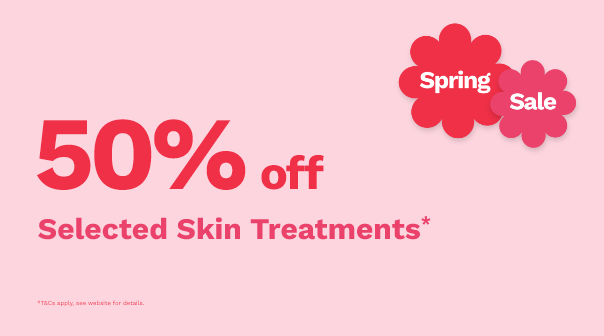Sunspots, or solar lentigines, are flat, brownish spots that tend to appear quietly but noticeably on our faces, hands, and other sun-exposed areas over time.
While these spots may be harmless, they can sometimes feel a little too permanent. The good news? You don’t have to settle if you’d rather have a clear, even complexion. We’ll cover how to achieve that, and more, in this guide.
What Do Sun Spots Look Like And What Causes Them
Sun spots, or lentigines, have long been linked to sun exposure, but recent studies, including research by Nakamura and colleagues, found that environmental factors like air pollution also play a significant role in their development.
These pigmented spots are most commonly found on sun-exposed areas like the face and hands, yet it’s not just UV radiation that causes them. Particulate matter (like soot from traffic pollution) and gases like sulphur dioxide and nitrogen dioxide “activate” certain cellular receptors in the skin, which triggers prolonged pigment production and persistent dark spots.
Basically, it’s not just the sun that’s leaving its mark on your skin—environmental pollution is playing a part too. It’s even more essential to protect your skin not only from UV rays but also from everyday pollutants.
Easy Tips And Treatments To Prevent Sun Spots
Preventing sun spots doesn’t have to be complicated—just a few simple habits can make a big difference in keeping your skin clear and even-toned. Here are some key tips to protect your skin from unwanted spots:
Wear At Least SPF 30 Sunscreen Every Day
Consistent sunscreen use is one of the best defences against sun spots. Look for a broad-spectrum SPF 30 or higher, which blocks both UVA and UVB rays, and apply it daily—even on cloudy days.
Opt for a lightweight, non-greasy formula that you could easily incorporate into your routine, especially if you’re prone to skipping it on rushed mornings.
When Outdoors, Seek Shade During Peak Hours
Peak UV exposure varies depending on where you live, but they’re generally highest between 10 a.m. and 4 p.m. So if you’re out and about during this time, stay indoors or find some shade. It’s a simple habit but it will reduce direct sun exposure and minimise the likelihood of you developing new spots.
Switch To Antioxidant-Rich Skincare
Look for antioxidants, specifically vitamins C and E when you’re buying skincare products. These can help neutralise free radicals from UV rays and pollution, which can both contribute to sun spots. Antioxidants improve the skin’s defences and reduce oxidative stress that leads to pigmentation.
Cleanse Your Skin After A Day Out
Make it a habit to cleanse your skin thoroughly after a day out. Doing so washes away pollutants which could be clinging to your skin’s surface.
A gentle cleanser is your best friend, especially if you live in a highly-polluted area. Double cleansing with oil cleanser then followed by a mild face wash can help get rid of debris and other impurities.
Avoid Tanning And Sunbeds
Tanning may give you that short, sun-kissed glow, but is it worth it? Many studies highlight that artificial indoor tanning beds expose the skin to high doses of UV radiation. This is not only linked to pigmentation changes (like sun spots), but also skin cancers.
A safer option? Embrace your natural skin tone or try a self-tanning product if you want a bit of the colour without the risks.
Look For Anti-Pollution Skincare Ingredients
Choosing skincare products with ingredients like niacinamide can make a big difference when we’re talking about pollution protection. Another study found that niacinamide helps shield skin cells from pollution-induced damage by neutralising reactive oxygen species (ROS) triggered by particulate matter.
These particles cause oxidative damage, leading to skin ageing and weakening. Niacinamide adds a protective layer by reducing this damage and keeping the skin’s barrier intact.
Professional Treatments To Remove Sun Spots
If simple remedies aren’t delivering results professional solutions can be longer-lasting and more effective against sun spots. Here are some advanced treatments to consider:
Laser Pigmentation Removal
Laser Pigmentation Removal is a targeted, non-invasive procedure that addresses dark spots directly by breaking down excess melanin, which causes hyperpigmentation like sun spots and freckles.
Laser Pigmentation Removal treatments could help improve skin tone evenness and dark spot intensity. The treatments use concentrated light that targets pigmented areas, causing the buildup of melanin to break down. Over time, the body naturally clears away these particles, lightening the appearance of sun spots.
Cosmetic-Grade Chemical Peels
Cosmetic-Grade Chemical Peels involve applying a safe solution to the skin’s surface, which effectively addresses sun damage, ageing, scarring, pigmentation, uneven skin tone and texture, and even fine lines and wrinkles.
The peels penetrate the skin’s layers to exfoliate and facilitate cell turnover, revealing a fresher, more even-toned complexion.
HydraFacial
HydraFacial is a more advanced dermabrasion treatment that uses a unique vortex technology to lift away dead skin cells and impurities. This helps support the skin’s natural renewal processes without needing abrasive materials. The controlled exfoliation in
HydraFacial treatments can then gradually lighten sun spots by evening out the skin tone, and promote fresh, healthy skin to emerge over time.
Sun spots may be a natural sign of time spent under the sun, but they don’t have to leave a permanent mark on your skin. Daily preventative measures combined with advanced professional treatments can help you get closer to a clearer, more even-toned complexion.
Ready to take control of your skin? Book a complimentary consultation with our Skin Therapists at Laser Clinics Canada. We’ll craft a Personalised Treatment Plan of your science-backed professional treatments, helping you identify the best path to glowing skin.







